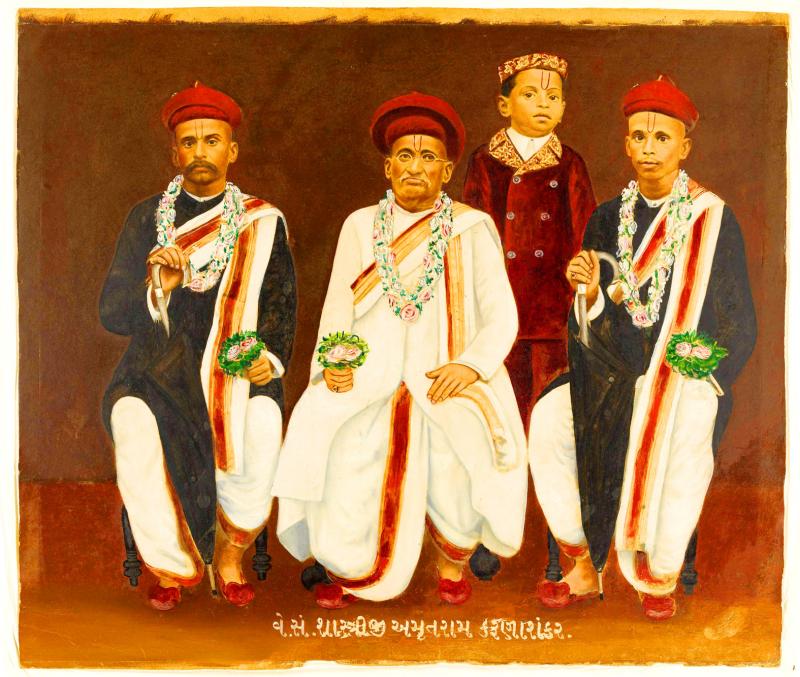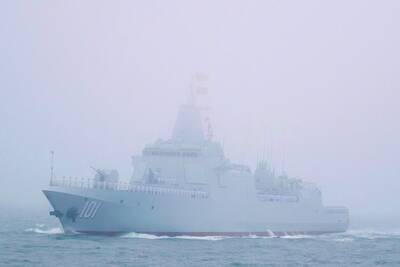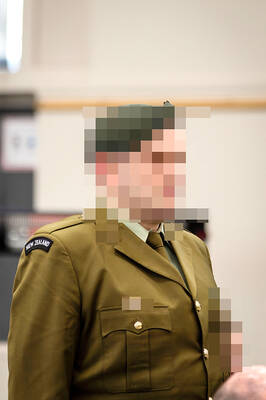Australia is to return 14 artworks to India, including at least six believed to have been stolen or illegally exported, the Australian National Gallery announced yesterday.
The gallery identified the works — which include sculptures, photographs and a scroll — as either stolen, looted or of unknown origin.
The collection is composed largely of “religious and cultural artifacts” worth a total of about US$2.2 million, including some dating back to the 12th century.

Photo: AFP/ NATIONAL GALLERY OF AUSTRALIA
Gallery director Nick Mitzevich said that the works were set to be returned to the Indian government within months.
“It’s a relief that they can be returned to the Indian people, and it’s a resolution for the National Gallery to close a very difficult chapter of our history,” he said.
Thirteen of the works are connected to alleged trafficker Subhash Kapoor, a former art dealer who owned a gallery in Manhattan, New York. Kapoor was the subject of a massive US federal investigation known as Operation Hidden Idol.
Kapoor, who is awaiting trial, denies all charges.
The gallery has already returned several other works it acquired via Kapoor, including a US$5 million bronze statue of the Hindu god Shiva that had been stolen from a temple in the Indian state of Tamil Nadu.
Mitzevich said the gallery had introduced guidelines to assess any legal and ethical issues with works it holds, and was investigating three other sculptures from its Asia collection.
“It’s very much a live issue with galleries around the world, and we want to make sure that we can resolve these issues in a timely manner,” he said.
Many of the antiquities Kapoor dealt in dated back to the 11th and 12th centuries, when the Chola Dynasty presided over a flourishing of Hindu art in Tamil Nadu.
Since Kapoor’s arrest in 2011, the US has also returned hundreds of artifacts.

ELECTION DISTRACTION? When attention shifted away from the fight against the militants to politics, losses and setbacks in the battlefield increased, an analyst said Recent clashes in Somalia’s semi-autonomous Jubaland region are alarming experts, exposing cracks in the country’s federal system and creating an opening for militant group al-Shabaab to gain ground. Following years of conflict, Somalia is a loose federation of five semi-autonomous member states — Puntland, Jubaland, Galmudug, Hirshabelle and South West — that maintain often fractious relations with the central government in the capital, Mogadishu. However, ahead of elections next year, Somalia has sought to assert control over its member states, which security analysts said has created gaps for al-Shabaab infiltration. Last week, two Somalian soldiers were killed in clashes between pro-government forces and

Ten cheetah cubs held in captivity since birth and destined for international wildlife trade markets have been rescued in Somaliland, a breakaway region of Somalia. They were all in stable condition despite all of them having been undernourished and limping due to being tied in captivity for months, said Laurie Marker, founder of the Cheetah Conservation Fund, which is caring for the cubs. One eight-month-old cub was unable to walk after been tied up for six months, while a five-month-old was “very malnourished [a bag of bones], with sores all over her body and full of botfly maggots which are under the

BRUSHED OFF: An ambassador to Australia previously said that Beijing does not see a reason to apologize for its naval exercises and military maneuvers in international areas China set off alarm bells in New Zealand when it dispatched powerful warships on unprecedented missions in the South Pacific without explanation, military documents showed. Beijing has spent years expanding its reach in the southern Pacific Ocean, courting island nations with new hospitals, freshly paved roads and generous offers of climate aid. However, these diplomatic efforts have increasingly been accompanied by more overt displays of military power. Three Chinese warships sailed the Tasman Sea between Australia and New Zealand in February, the first time such a task group had been sighted in those waters. “We have never seen vessels with this capability

‘NO INTEGRITY’: The chief judge expressed concern over how the sentence would be perceived given that military detention is believed to be easier than civilian prison A military court yesterday sentenced a New Zealand soldier to two years’ detention for attempting to spy for a foreign power. The soldier, whose name has been suppressed, admitted to attempted espionage, accessing a computer system for a dishonest purpose and knowingly possessing an objectionable publication. He was ordered into military detention at Burnham Military Camp near Christchurch and would be dismissed from the New Zealand Defence Force at the end of his sentence. His admission and its acceptance by the court marked the first spying conviction in New Zealand’s history. The soldier would be paid at half his previous rate until his dismissal